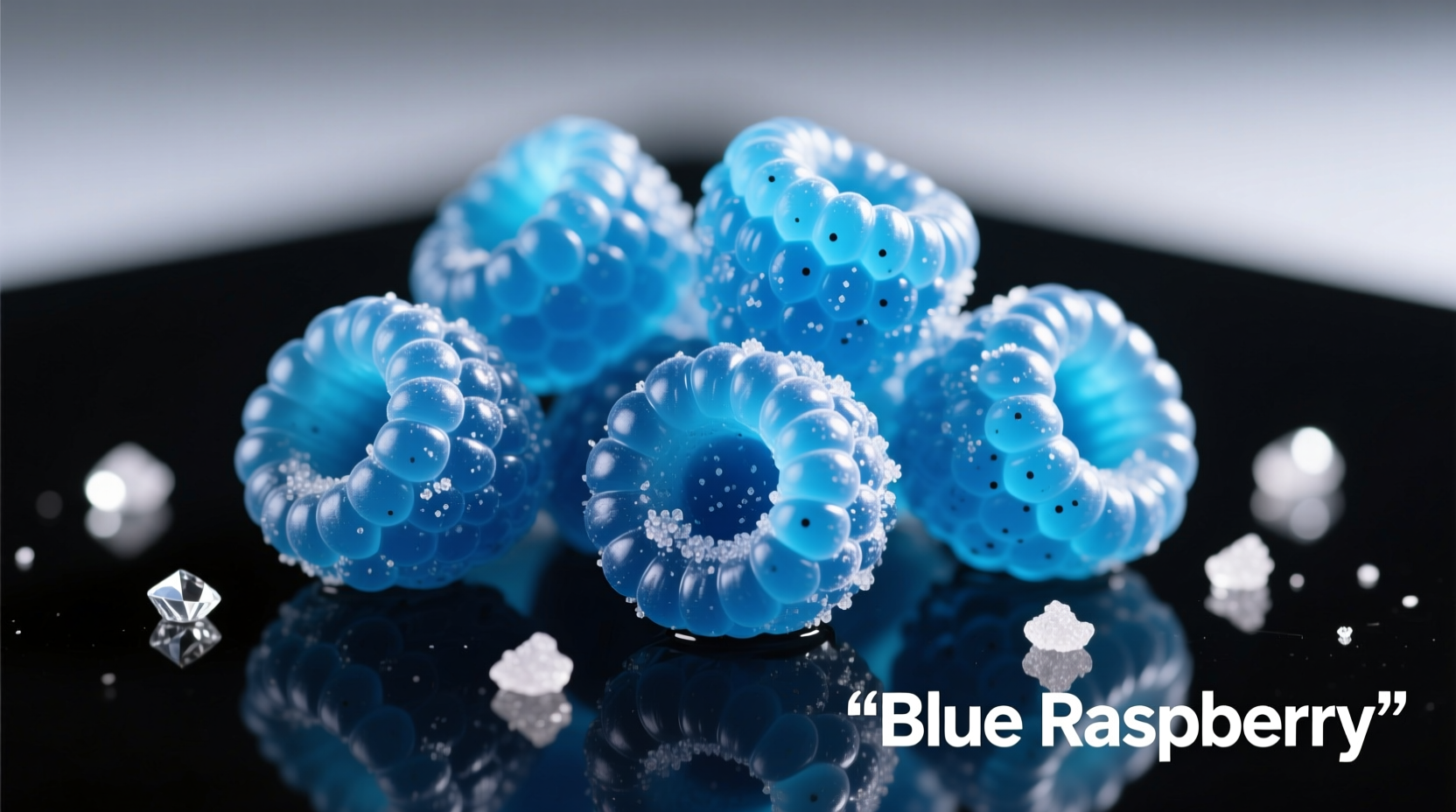Curious about what gives your favorite blue treats that distinctive taste? You're not alone. Millions search for what is blue raspberry flavor made of each year, often surprised to learn blue raspberries aren't real. This comprehensive guide reveals exactly how flavor scientists create this popular taste sensation, what ingredients are actually used, and why the color blue became associated with raspberry flavor. Whether you're checking ingredients for dietary needs or just satisfying your curiosity, you'll get clear, science-backed answers about this artificial flavoring staple found in everything from slushies to energy drinks.
The Science Behind Artificial Raspberry Flavor
Despite its name, blue raspberry flavor contains no actual raspberry components. Flavor chemists create the raspberry taste profile using a combination of esters—organic compounds that produce fruity aromas. The primary compound is ethyl methylphenylglycidate (EMPG), which provides that characteristic sweet-tart raspberry note. Additional compounds like raspberry ketone and various aldehydes enhance the complexity, mimicking the 300+ volatile compounds found in real raspberries.
Food scientists deliberately chose blue coloring to solve a marketing problem. In the 1970s, when flavored beverages and frozen treats exploded in popularity, red coloring was already associated with cherry and strawberry flavors. Creating a distinctive blue raspberry flavor allowed manufacturers to offer another "berry" option without color confusion. The blue hue comes exclusively from Brilliant Blue FCF (FD&C Blue No. 1), a synthetic dye approved by the FDA since 1969.
Blue Raspberry Flavor Timeline: From Concept to Cultural Icon
The development of blue raspberry flavor follows a clear historical trajectory that explains its artificial nature:
| Time Period | Key Development | Impact on Flavor Industry |
|---|---|---|
| 1950s-1960s | FD&C Blue No. 1 approved for limited food use | Created possibility for blue-colored foods |
| Early 1970s | Flavor manufacturers seek to differentiate products | Red flavors saturated market (cherry, strawberry, watermelon) |
| Mid-1970s | First "blue raspberry" products appear (ICEE, candy) | Established blue as "berry" flavor distinct from red options |
| 1980s-Present | Blue raspberry becomes standard flavor category | Now appears in 200+ product categories from beverages to vitamins |
Natural Raspberry vs. Blue Raspberry Flavor: Key Differences
Understanding what blue raspberry flavor is made of requires comparing it to actual raspberry flavor:
| Characteristic | Natural Raspberry Flavor | Blue Raspberry Flavor |
|---|---|---|
| Source | Actual raspberries (Rubus idaeus) | Artificial flavor compounds + blue dye |
| Primary Compounds | Raspberry ketone, esters from fruit | EMPG, aldehydes, Brilliant Blue FCF |
| Natural Color | Bright red | Blue (no natural equivalent) |
| Common Applications | Preserves, desserts, premium products | Frozen treats, sodas, candies, sports drinks |
| Taste Profile | Complex sweet-tart with floral notes | Simplified sweet-tart, often more candy-like |
Where You'll Find Blue Raspberry Flavor
Now that you know what ingredients are in blue raspberry flavor, you might wonder where it appears. This artificial flavor dominates several product categories:
- Frozen beverages - Slurpees, ICEEs, and other frozen drinks (75% of blue raspberry products)
- Candies - Gummies, lollipops, and chewy treats where color differentiation matters
- Energy drinks - Provides visual distinction from red-colored competitors
- Children's medications - Makes syrups more appealing while avoiding red color associations
- Sports nutrition - Gels, chews, and hydration products
The blue color serves practical marketing purposes beyond just looking distinctive. In children's products, it avoids the "medicine" association of red colors. In sports nutrition, it provides visual contrast against red fruit flavors. Most importantly, it created an entirely new flavor category when the red spectrum became overcrowded.
Safety and Regulatory Information
Many consumers wonder is blue raspberry flavor safe to consume. According to the U.S. Food and Drug Administration, both the flavor compounds and Brilliant Blue FCF are generally recognized as safe (GRAS) when used within established limits. The European Food Safety Authority has also approved Brilliant Blue FCF (E133) for food use.
However, some considerations apply:
- Brilliant Blue FCF may cause mild allergic reactions in sensitive individuals
- A small percentage of children show temporary behavioral changes with high consumption of artificial colors
- No nutritional value—blue raspberry flavor is purely for sensory experience
For those seeking natural alternatives, some manufacturers now offer "blueberry-raspberry" blends using natural blueberry extract with raspberry flavor, though these lack the vibrant blue hue of traditional blue raspberry products.

Practical Considerations for Consumers
When evaluating products with blue raspberry flavor, consider these practical factors:
- Reading labels: Look for "artificial flavor" and "Blue 1" or "Brilliant Blue FCF" in ingredients
- Color intensity: Brighter blue usually indicates higher dye concentration
- Flavor authenticity: Higher quality products use more complex flavor profiles
- Dietary restrictions: Generally vegan and gluten-free, but check specific products
Understanding what gives blue raspberry its color helps make informed choices. While the vibrant blue appeals visually, remember it serves primarily as a marketing tool to distinguish this flavor from other berry options. The flavor itself remains a simplified interpretation of raspberry taste designed for mass appeal rather than botanical accuracy.











 浙公网安备
33010002000092号
浙公网安备
33010002000092号 浙B2-20120091-4
浙B2-20120091-4